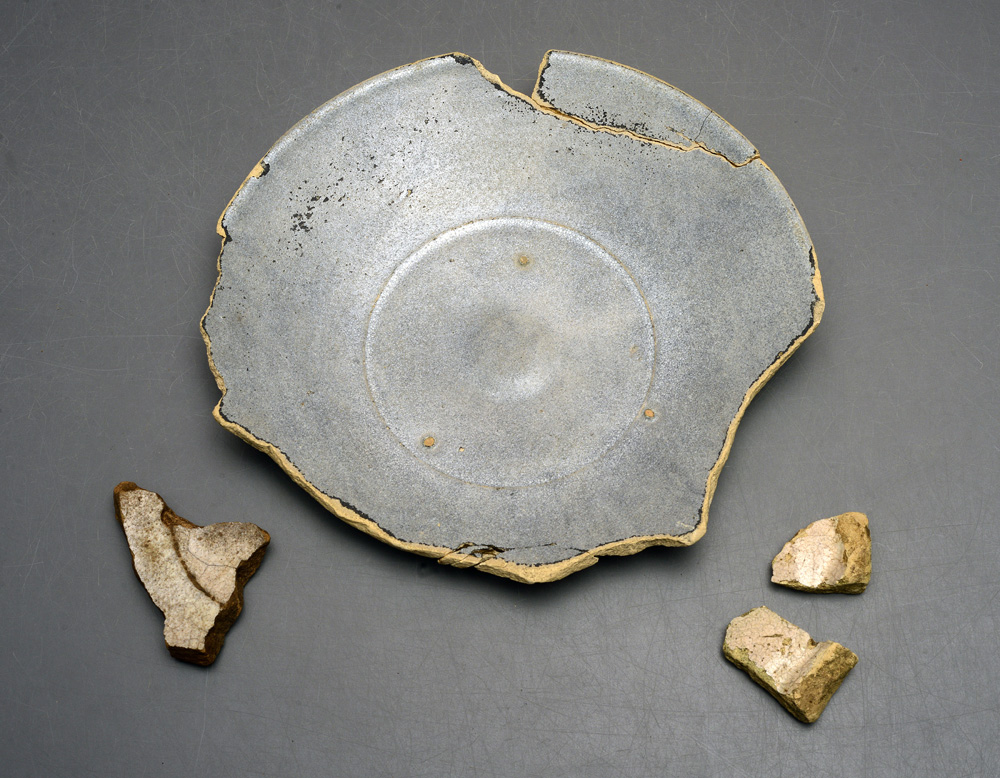Photos: Artifacts of a Failed Spanish Colony
Shipwreck Site

Planks from the hull of a 1559 shipwreck sit on the sandy bottom of Pensacola Bay. Researchers are the University of Western Florida discovered this shipwreck in summer 2016 after a magnetic survey of the ocean bottom. The ship was one of six that went down in the bay during a hurricane in September 1559. It was part of a fleet led by Spanish conquistador Don Tristan de Luna, who was attempting to settle a permanent colony where Penascola, Florida, now sits.
[Read more about the Spanish shipwreck]
Wreck Site

A nervous fish hovers at the wreck of a Spanish shipwreck discovered in summer 2016. This is the third ship from the Luna expedition to be discovered in the bay. The first was found nearby this spot in 1992, and the second in 2007. Because researchers don't know the names of each specific ship, they have named them for the nearest geographical feature, a peninsula called Emanuel Point. Thus, the 1992 ship is the Emanuel Point I, the 2007 discovery is the Emanuel Point II, and this is the Emanuel Point III. Based on documents from the Luna expedition, researchers think there are three more shipwrecks somewhere in the bay.
Emanuel Point III Artifacts

Researchers discovered the Emanuel Point III buried in the sand under 7 feet (2 meters) of water in Pensacola bay while investigating a magnetic anomaly under the surface. Magnetic anomalies are typically false alarms, like old fishing traps or buried junk, said marine archaeologist Greg Cook of the University of Western Florida. But within a few minutes of probing the sands, archaeology students from the university found large cobbles, which were used for ballast in 16th-century ships. Hand excavations revealed ceramic fragments like these, which are consistent with 16th-century Spanish pottery.
Spanish shards

So far, archaeologists have dredged some areas of the Emanuel Point III shipwreck and uncovered planks, timbers, iron concretions and ceramic pieces like these. The colonists probably salvaged what they could from the shallow-water wrecks after the storm died down, marine archaeologist Cook told Live Science. Nevertheless, they often left things behind. In the Emanuel Point II shipwreck, for example, the archaeologists found an ivory manicure set that would have been a very expensive loss for its owner.
[Read more about the Spanish shipwreck]
Ballast

Large cobbles found in the wreckage of the Emanuel Point III were the first sign to researchers that they might have a shipwreck on their hands. However, they had to excavate further to find timbers to confirm the discovery, as ships sometimes dumped piles of ballast before they took on new cargo.
Get the world’s most fascinating discoveries delivered straight to your inbox.
Pieces in the wreckage

The hurricane that struck Luna's fleet in September 1559 made landfall only a few weeks after Luna's would-be colonists arrived at what is now Pensacola, Florida. There were 1,500 people in the expedition, 12 ships and 240 horses.
"It would have been a pretty nasty place to live," said marine archaeologist Greg Cook.
The loss of the ships, which had many supplies aboard, permanently crippled the effort to establish a colony. The survivors of the hurricane pushed inland but weren't able to establish a permanent settlement. The episode convinced the king of Spain to pull back on colonizing the Gulf of Mexico, Cook said, and future Spanish attempts focused on the East cost.
Ship's Vessels

The ceramics found among the ballast of the Emanuel Point III were coarse-fired vessels that would have held everything from water to wine to olives to vinegar, said the University of Western Florida's Cook. Even small fragments can reveal the daily life aboard a 16th century ship, Cook said, and give insight into the details that an expedition leader like Luna wouldn't have documented in letters or diaries.
[Read more about the Spanish shipwreck]
Meanwhile, on shore…

In 2015, construction in a residential area in Pensacola turned up 16th century artifacts — the first evidence of Luna's colony on land. Here, University of Western Florida researcher Tom Garner holds a fragment of the neck of an olive jar, an all-purpose vessel used by Spanish colonists to hold food, wine and other supplies.
Other wreckage

A nearly intact plate found in the Emanuel I shipwreck, which was discovered in 12 feet (4 m) of water in Pensacola Bay in 1992. This style of glazed ceramic is known as majolica. In the Emanuel I and II shipwrecks, researchers also found artifacts including an armored breastplate and a ivory manicure set with a built-in whistle.
Iron Nails

Iron nails found on land at the Luna settlement site in 2015. One of the ships in the flet was run aground by the September 1559 hurricane, according to marine archaeologist Cook, and colonists likely salvaged every nail and timber from that vessel to help build the settlement.
Excavating on the Seafloor

An archaeologist with the University of Western Florida excavates at the Emanuel Point II shipwreck site. Researchers are still wrapping up their study of this second shipwreck. They've covered their initial excavations of the Emanuel Point III shipwreck with sand to preserve the fragile 150-year-old wood and will return to that site in the summer of 2017, Cook said.

Stephanie Pappas is a contributing writer for Live Science, covering topics ranging from geoscience to archaeology to the human brain and behavior. She was previously a senior writer for Live Science but is now a freelancer based in Denver, Colorado, and regularly contributes to Scientific American and The Monitor, the monthly magazine of the American Psychological Association. Stephanie received a bachelor's degree in psychology from the University of South Carolina and a graduate certificate in science communication from the University of California, Santa Cruz.


